Fourth Voicings for Jazz Piano
Chords are normally built in 3rds, which means we play every other note - 1 3 5 7 9 11 13.
However, you can rearrange these notes and voice a chord in 4ths instead.
Let’s take a C major 7 chord - start your voicing from the chord’s 7th (B) - and build upwards in 4ths starting with your left hand (B E A) and then continuing in your right hand (D G C):

This is a sophisticated sounding 4th voicing for C major 7 - ideal when you’re playing with a bass player (the bassist plays the root, C).
Minor 7 Chords Played in 4ths
Most chord voicings can be tweaked to fit any chord type (usually just by tweaking the chord’s 3rd and 7th to fit the other types of 7th chord).
So now let’s apply this 4th voicing to a C minor 7 chord - all we have to do is flatten the chord’s 3rd and 7th - so that we play a minor 3rd (Eb) and a minor 7th (Bb). All of the other notes stay the same:
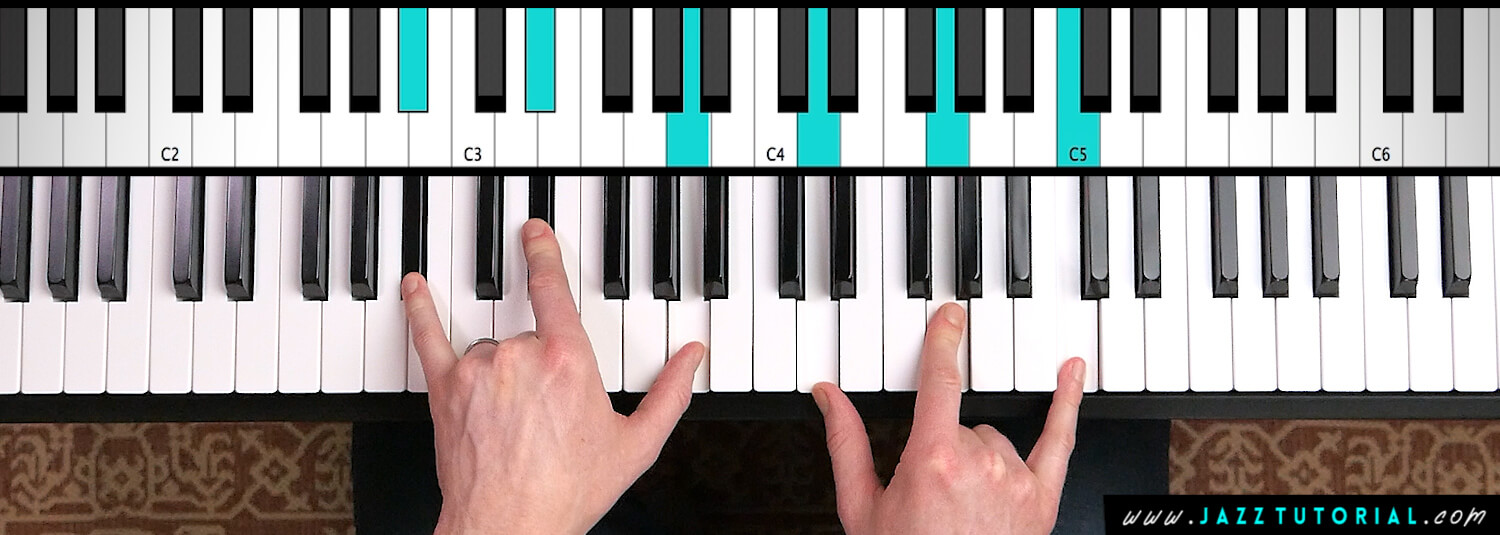
NOTE: For the minor 7 voicing, not every 4th is a perfect 4th - we end up playing an augmented 4th (also known as a ‘tritone’) between Eb and A.
So 4th voicings aren’t always a stack of ‘perfect 4ths’ - we count up the notes of the scale to identify the 4th note, and this occasionally results in a diminished or augmented 4th, depending on the notes in the scale.
V7 Chords Played in 4ths
We can also play V7 chords in 4ths. Again, we just need to tweak the 3rd and 7th to match a V7 chord, while the other notes will stay the same.
For a C dominant 7 chord (written as ‘C7’), the notes are C E G Bb - it has a major 3rd (E) and a minor 7th (Bb).
So let’s start our series of 4ths on the chord’s minor 7th (Bb), then the major 3rd (E), and the rest of the notes stay the same:
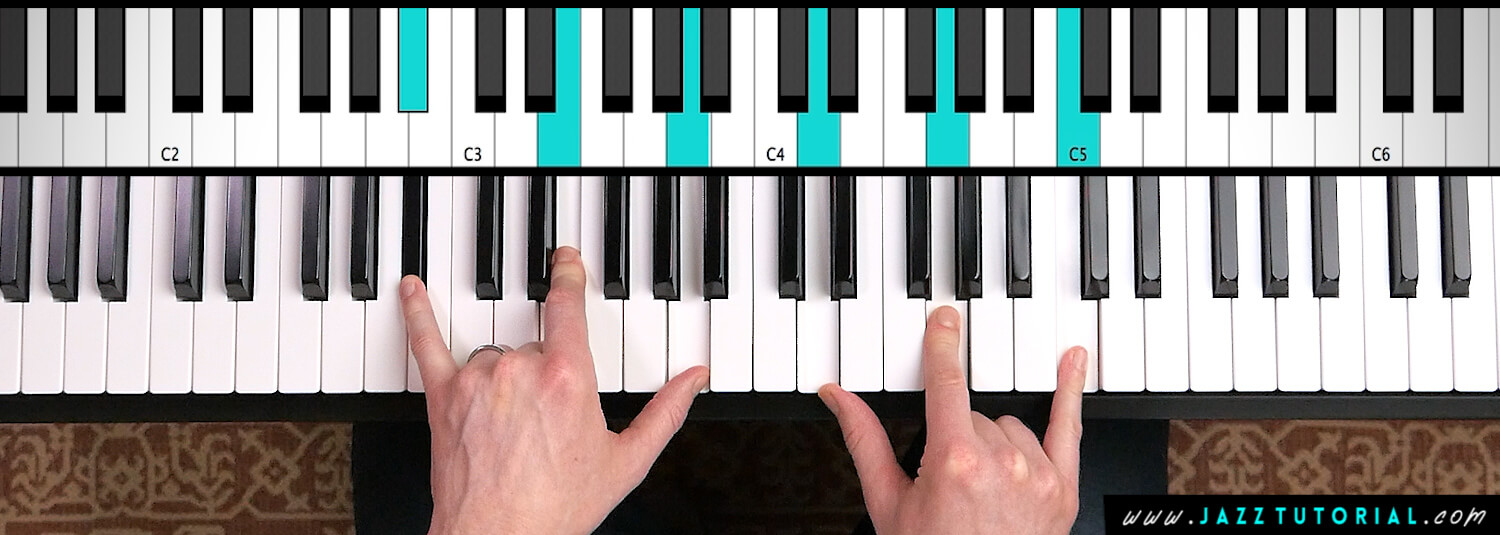
Again, this voicing for C7 contains an augmented 4th (tritone), this time between Bb and E.
'Sawn-Off' 4th Voicings
Many chord voicings can be ‘sawn-off’ to produce even more variations. ‘Sawn-off’ is my term for cutting off the top note, or multiple notes, and playing the lower section of the chord only.
This can be useful when the melody note is the 5th of the chord, in which case you can play a 4th voicing but ‘saw off’ the top note, so that you have the 5th as your top note instead: B E A / D G.
'Sawing off' the top notes of a 4th voicing can also be helpful when playing solo jazz piano (without the help of a bass player to paly the chord's root).
Here is a modified 4th voicing for C major 7 which you can use when playing solo piano. Notice that I've 'sawn off' the top two notes (G and C) which allows me to stretch down to the root in my left hand:
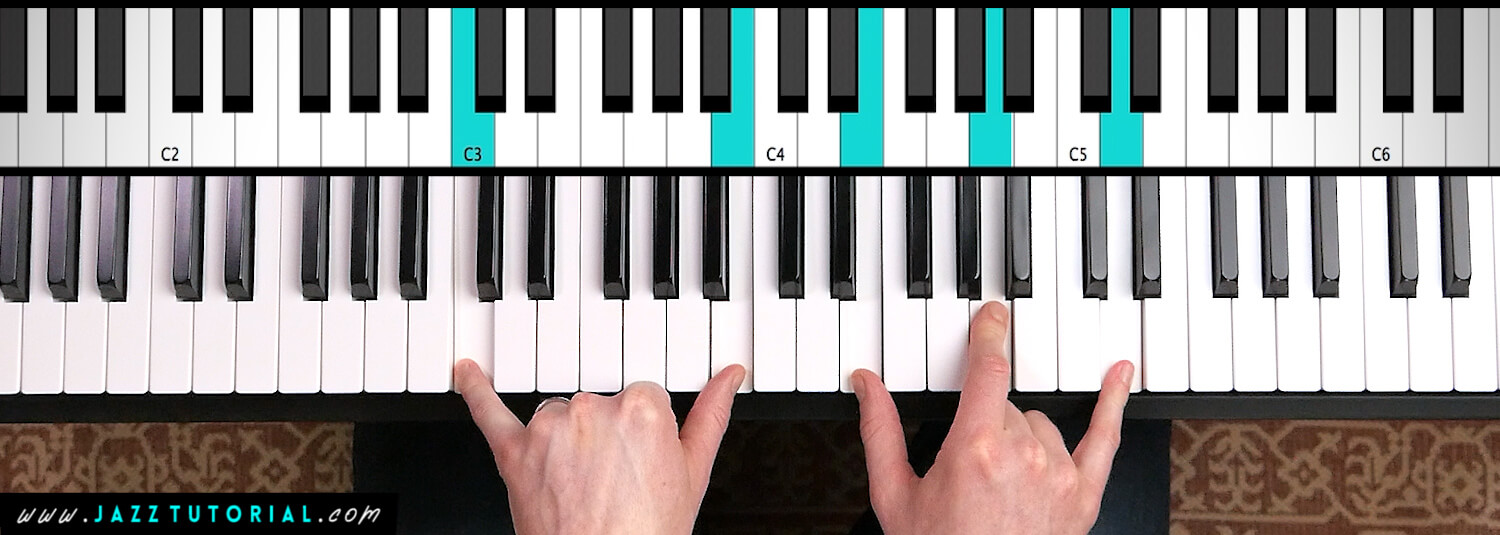
The chord voicing above would be ideal when the melody note is the 9th (D).
You can also tweak this 4th voicing to fit C minor 7 (again, ideal for when the melody note is the 9th):
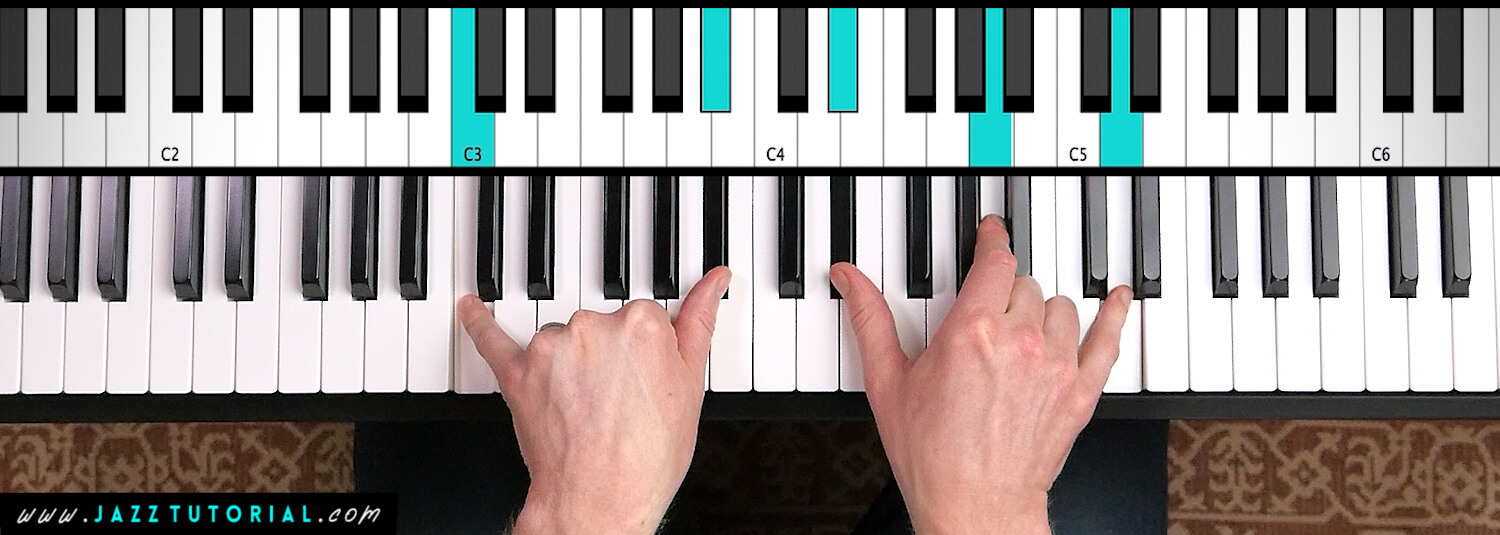
Or you could tweak this voicing to fit C7:
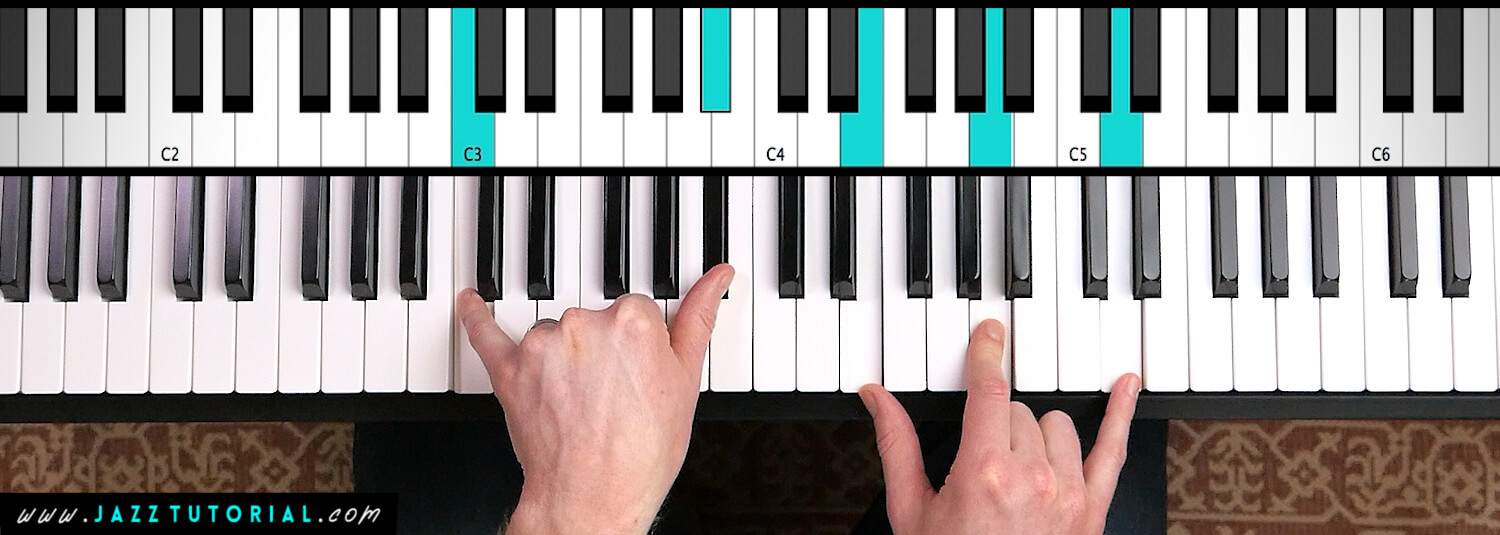
Practice Tip
Practice building 4th voicings (maj 7, min 7, V7) from all 12 notes (C - C# - D - Eb - E - F - F#, etc). Challenge yourself to play every voicing note-perfectly in a row - if you make a mistake, you have to go back and start again!
Next, play through the songs in your real book and look for opportunities to use the 'sawn-off 4th voicing’ for solo piano (1 7 / 3 6 9). Look out for major 7, minor 7 or V7 chords where the melody note is the 9th.

RECOMMENDED SONGS: Girl From Ipanema, Misty, Cry Me A River, The Taxi Driver Theme. Get my Real Books Guide.
Free Sheet Music
Can I send you 39 pages of Jazz Piano sheet music?
-
Includes '29 Jazz Licks' (sheet music)
-
'The Chord Voicing Guide' (ebook)
-
'Sweet Chord Progressions and Riffs' (sheet music)
About the Author
Julian Bradley is a Jazz pianist and music educator from the U.K. He has a masters degree in music composition and loves helping musicians learn Jazz piano and reach their music goals. YouTube channel.
